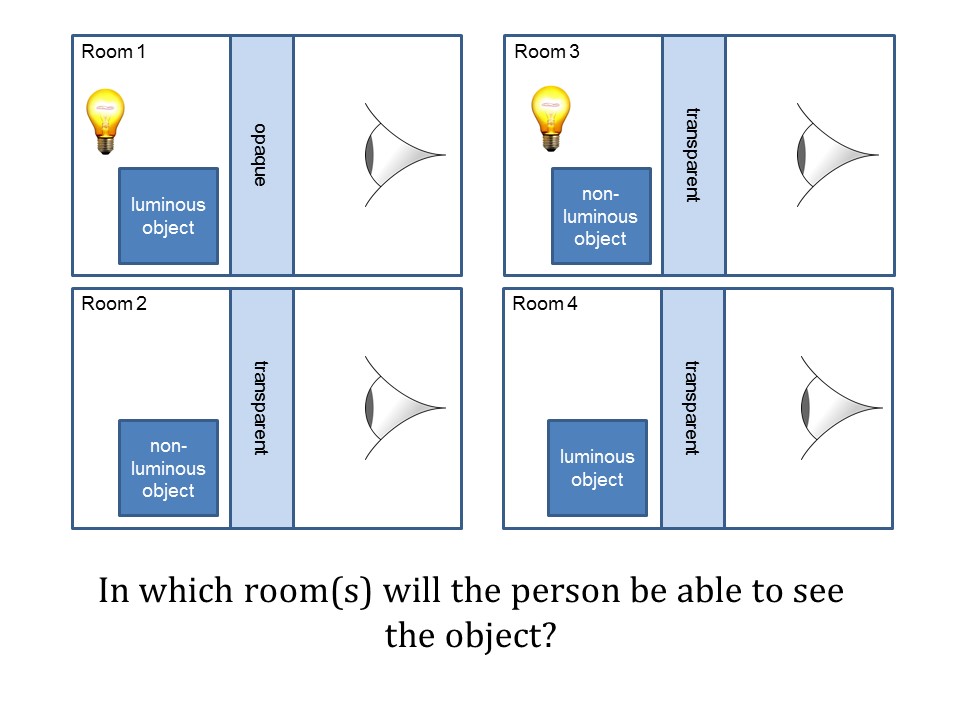Light teaching resources
Worksheets and lesson ideas to challenge students aged 11 to 16 to think about light, reflection, refraction and the human eye (GCSE and Key Stage 3)
I love teaching about light. Students will come to your lesson with lots of prior knowledge about light, dark and colours. Think shadows, rainbows and blue skies. This video clip below can be used alongside questioning to help assess students’ prior knowledge – the world is a scary place without a scientific understanding!
What are shadows and how do they form? Would we still have shadows if light didn’t travel in straight lines? Do all objects create shadows and do objects create shadows in space?
Luminous and non-luminous objects, transparent,translucent and opaque
 Key Stage 3 worksheet on luminous and non-luminous objects. Students classify objects as luminous and non-luminous, and opaque, translucent and transparent. Students then draw ray diagrams to show how we see luminous and non-luminous objects and finally show light interacts with different materials. (PDF)
Key Stage 3 worksheet on luminous and non-luminous objects. Students classify objects as luminous and non-luminous, and opaque, translucent and transparent. Students then draw ray diagrams to show how we see luminous and non-luminous objects and finally show light interacts with different materials. (PDF)
Properties of light
Key Stage 3 synoptic worksheet on the main properties of light. Students use a photograph as a stimulus to work with their partner to identify the main properties of light and then explain them. This activity would be best done at the end of the light topic to help consolidate understanding and support students to make links between lessons. (PDF)
Refraction and reflection of light (including lenses)
Key Stage 3 and GCSE practical activity on refraction and reflection of light. Students use a series of objects (glass block, convex and concave lenses, prism and mirror) to move light around an obstacle course. If they successfully use refraction and reflection, they move on to total internal reflection. This practical is as an excellent way to revise the light topic. This resource was made in collaboration with Philippa Franks. (PDF)
Refraction and Snell’s law
GCSE worksheet on refraction and Snell’s law. Students draw ray diagrams for refracted rays to show what happens to light when it goes through materials of different densities. To stretch students, ask them to calculate the angle of refraction at each boundary and hence calculate the final angle of refraction using the refractive index of each material. This activity was created by Davinder Bhachu. (PDF)
Function of the human eye
GCSE worksheet on the function of the eye. This activity could be used once students have a good understanding of the different parts and functions of the eye. Students could work in pairs to complete the table and take on the role of an optician as they diagnose their patients’ problems. (PDF)
Why is the sky blue?
This is a great question to explore when teaching light. It could be posed as a question at the start of a unit and then returned to at the end. It brings together ideas of scattering, particles and colours of visible sunlight. It can also be explained using science at different levels e.g. primary, secondary and post-16. There is a nice explanation of this phenomenon in this YouTube video.
Thinking deeper
- Why does space appear black?
- What colour is a red jumper in blue light?
